The new Skoda Superb will bring substantial tech upgrades, a new 62-mile plug-in hybrid powertrain and a revamped cockpit that majors on user-friendliness when it goes on sale in mid-2024.
Skoda's fourth generation executive flagship returns in hatchback and estate bodystyles – and sticks with combustion power, bringing a choice of six engines from launch: three petrols, two diesels and a petrol-electric PHEV.
Prices for the new Superb are expected to represent a slight premium compared with the outgoing car, which starts from £32,605 - but Skoda has promised minimal increases for the Kodiaq and the same is expected to be true here. Plug-in hybrids, meanwhile, are likely to nudge towards the mid-to-high-£40,000s to slightly under-cut the closely related Volkswagen Passat.
The Superb could be the final all-new internal-combustion car Skoda launches, as the brand pivots to offering solely electric cars by 2030. But the Czech firm is yet to confirm whether each of its current ICE cars will go electric in their next generation.
>> Skip to the Skoda Superb prototype drive
Engine line-up
The petrol line-up opens with a 148bhp, mild-hybrid 1.5-litre, while the 201bhp and 262bhp 2.0-litre options – the latter driving both axles – forego electrical assistance.
The two-wheel-drive diesel produces 148bhp, while the four-wheel-drive version makes 190bhp.
![]()
The range-topping PHEV pairs the entry-level 1.5-litre petrol with a single electric motor to send 201bhp through the front wheels. Pure-electric propulsion is powered by a 25.7kWh pack that can be recharged at rates up to 50kW (DC), allowing a 10-80% charge in 25 minutes, Skoda said. The PHEV is only available in estate form from launch, unlike the previous-generation car, which could be had with plug-in power only in four-door saloon guise.
The firm has yet to detail the performance yielded by these engines, but it is expected to match the outgoing model in a straight line. For reference, the previous 215bhp Superb iV plug-in hybrid dispatched the 0-60mph sprint in 7.3sec in our full road test.
Interior
Inside, the Superb joins its SUV sibling, the new Skoda Kodiaq, in adopting a trio of ‘smart dial’ controls on the dashboard which can be set to control different functions according to user preference. The two outer dials can be set to control seat heating and interior temperature, while the centre dial can be used to adjust the infotainment volume, fan speed, air conditioning and drive modes - and zoom in and out of the sat-nav.
There are also physical buttons across the centre console and steering wheel for critical controls such as the window demisters and audio settings.
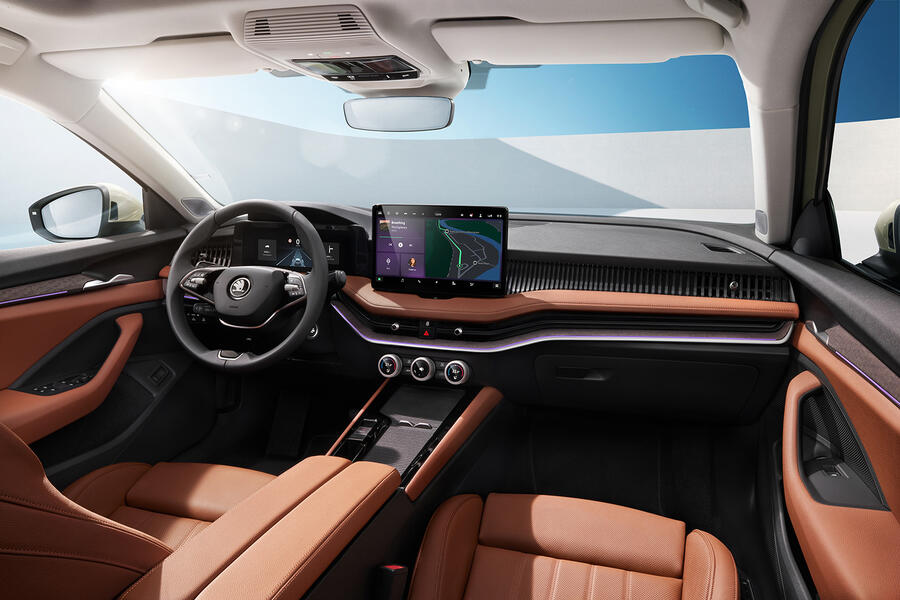
Infotainment is hosted on a central touchscreen measuring either 10.0in or 13.0in (depending on specification), but only the 13.0in unit is expected to be offered in the UK - as is the case for the Kodiaq.
Skoda said that all of the textiles used inside the new Superb are 100% recycled, and that the ‘cognac’ brown leather option is tanned using waste water from olive processing – enhancing the car’s sustainability credentials.
The brand also highlighted a new series of ‘simply clever’ interior features intended to offer extra convenience, including a clip for parking tickets, a USB port in the rear-view mirror, and storage for hi-vis vests in the doors.
Design
The new Superb’s exterior design is subtly but obviously evolved over the current car, with a bolder shoulder line and more angular LED headlights among the features introduced as part of the brand’s new Modern Solid design language.
Skoda design boss Oliver Stefani said: “The Superb has traditionally shaped Škoda’s design language and the fourth model generation will continue to do just that. Its looks are characterised by sharply drawn lines, clearly defined dynamic proportions and a modern sculptural and crystalline styling.”
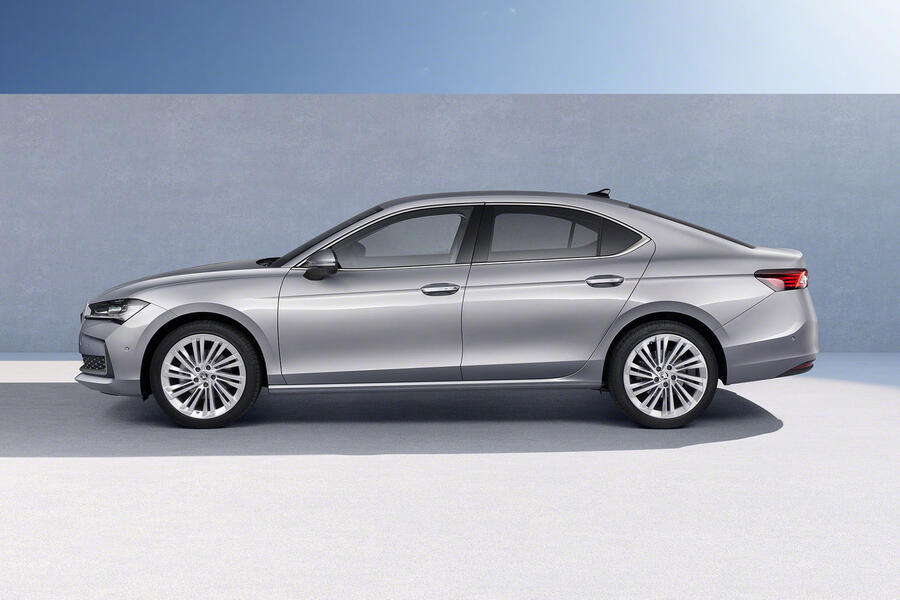
Stefani also highlighted the importance of aerodynamics in the exterior design, with the brand claiming a 10% reduction in drag for the saloon and 15% for the estate.
It is around 40mm longer and 10mm taller than the outgoing car – with dimensions varying by body type – but both the hatchback and estate are 15mm narrower than previously. Nonetheless, luggage capacity is increased by 20 litres in the saloon (to 645 litres) and 30 litres in the estate (to 690 litres).
Comment, Felix Page
Ford Mondeo, Vauxhall Insignia, Volvo S90, Mazda 6… The mid-market executive segment has taken a battering in recent years, with those once-celebrated mile-munchers consigned to history, each with no direct replacement lined up.Even the Volkswagen Passat saloon – once the darling of the suburban salesman – has bitten the dust.
So praise be to Skoda, not just for resurrecting its repmobile as opponents turn their back on the market, but for remaining so overtly committed to the attributes that made the Superb popular in the first place – small wonder when the outgoing car has sold 845k units since launch in 2015.
In raw stylistic terms and much of its technological make-up, the Mk4 Superb is an all-out reinvention. But peel back the glitter and what prevails is a reassuring sense of familiarity. Yes, there’s a slick new digital interface, eco-flavoured upholstery options and a PHEV with more electric range than a first-gen Nissan Leaf.
But on the other hand, we’ve got physical buttons galore, a boot the size of an Amazon warehouse and the choice of two (count ’em) electrically unassisted diesel engines.
As the car market is turned on its head by the emergence of new brands, technologies and segments, it’s surely no bad thing that cars so conventionally conceived can survive.
2024 Skoda Superb prototype drive
The SUV trend is snowballing at quite a rate, but as a large family car, the Skoda Superb Estate is still one of the best. It might lack the visual presence of its Kodiaq stablemate, but it’s enormous, comfortable, fine riding and competitively priced, and it offers a wide range of engines that are cheap to run. So its fourth-generation successor will have big shoes to fill when it arrives in 2024.
The new Superb hatch and estate share much of their architecture with the jointly developed Volkswagen Passat. The styling is still smart but updated (such as with slimmer headlights and tail-lights) to bring it in line with the new Kodiaq, launching at a similar time. The new Superb Estate is 40mm longer and 5mm taller than its predecessor, with the vast boot increasing from 660 to 690 litres – more than in the Peugeot 508 SW and rugged-looking Citroën C5 X.
Prices, trim levels and specs will be confirmed in November 2023, but there will be a standard Superb, a sportier-looking Sportline version and the luxury-focused Laurin & Klement trim. The slightly raised and more rugged-looking Scout estate will not be offered in the UK.
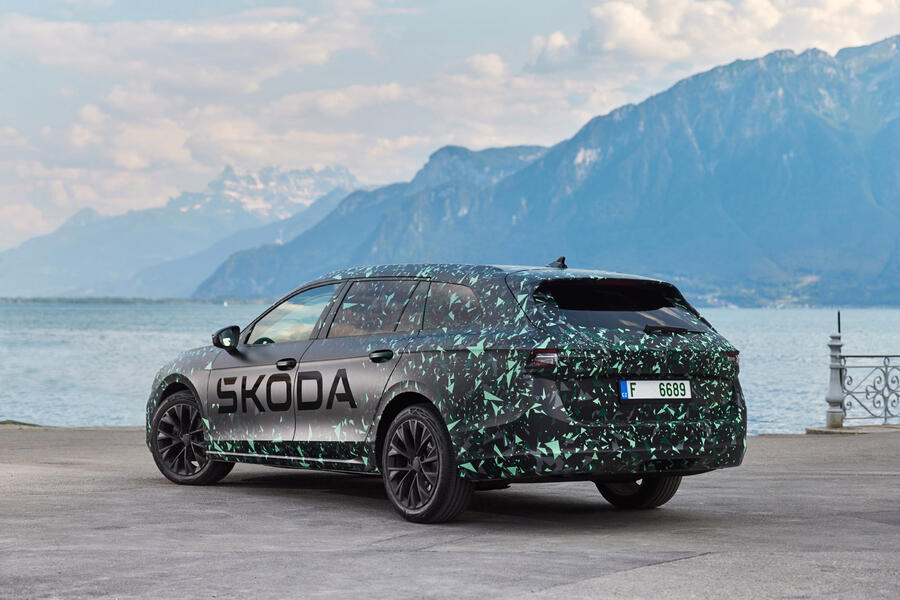
At launch, there will be three petrol engines, two diesels and a plug-in hybrid, all fitted with an automatic gearbox as standard. The entry-level 148bhp 1.5-litre petrol is the only one with mild-hybrid tech. It’s smooth and quiet and has enough power if you don’t tend to carry a car full of occupants. For more grunt, there’s a 2.0-litre petrol with 201bhp or four-wheel drive and 261bhp. The most powerful 190bhp diesel also drives all four wheels, while the 148bhp diesel feels more lively than the 1.5-litre petrol, with plenty of torque that surges you forward effortlessly.
The plug-in hybrid makes a big leap in battery size and range over the outgoing Superb. As before, a petrol engine combines with an electric motor, but a 25.7kWh battery (the outgoing iV’s is 12.7kWh) is good for a 62-mile EV range. There’s the ability to charge at 50kW, while the slower, 11kW output will charge from 0-100% in two and a half hours.
The latest version of adaptive suspension (now called Dynamic Chassis Control Pro) is available and stiffens or softens the ride depending on the selected drive mode. On the prototypes we drove, we sampled only the Normal setting, which does a good job of ironing out bumps. The suspension remains settled, while body control over undulating roads is well contained. Earlier models of the outgoing Superb struggled to deal with this, resulting in a constant (if slight) ‘floating’ sensation. Overall, this option makes the Superb a calming long-distance cruiser.
Other than a slight grumble from the diesel motor on start-up, little engine noise filters through to occupants. There’s a minor level of vibration through the floor, but road and wind noise are well contained.
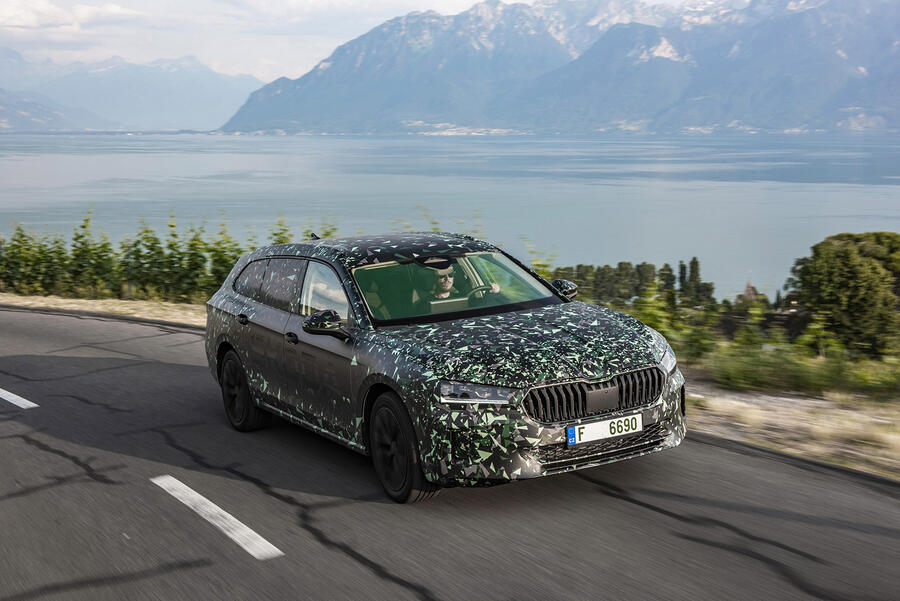
The Superb’s interior promises to be the most comfortable version yet, with even more space and a massaging function in the front. Rear passengers get a fold-down centre armrest that can now extend and slide forwards – handy when using the integrated tablet holder.
The gear selector is mounted on the steering column, which frees up extra storage space in the centre console. A 12.9in infotainment touchscreen will feature with user-friendly physical rotary controls.
In short, Skoda hasn’t jeopardised what made the Superb such a strong family car. If the Kodiaq is too bulky for you, or you don’t need seven seats, this car has a lot going for it.
Price Circa £35,000 (est) Engine 4 cyls in line, 1498cc, turbocharged, petrol, plus 48V ISG Power 148bhp Torque 184lb ft (est) Gearbox 7-spd dual-clutch automatic, FWD Kerb weight 1500kg (est) 0-62mph 9.2sec (est) Top speed 133mph (est) Economy 45mpg (est) CO2 145g/km, 34% (est) Rivals Peugeot 508, Volkswagen Passat Estate


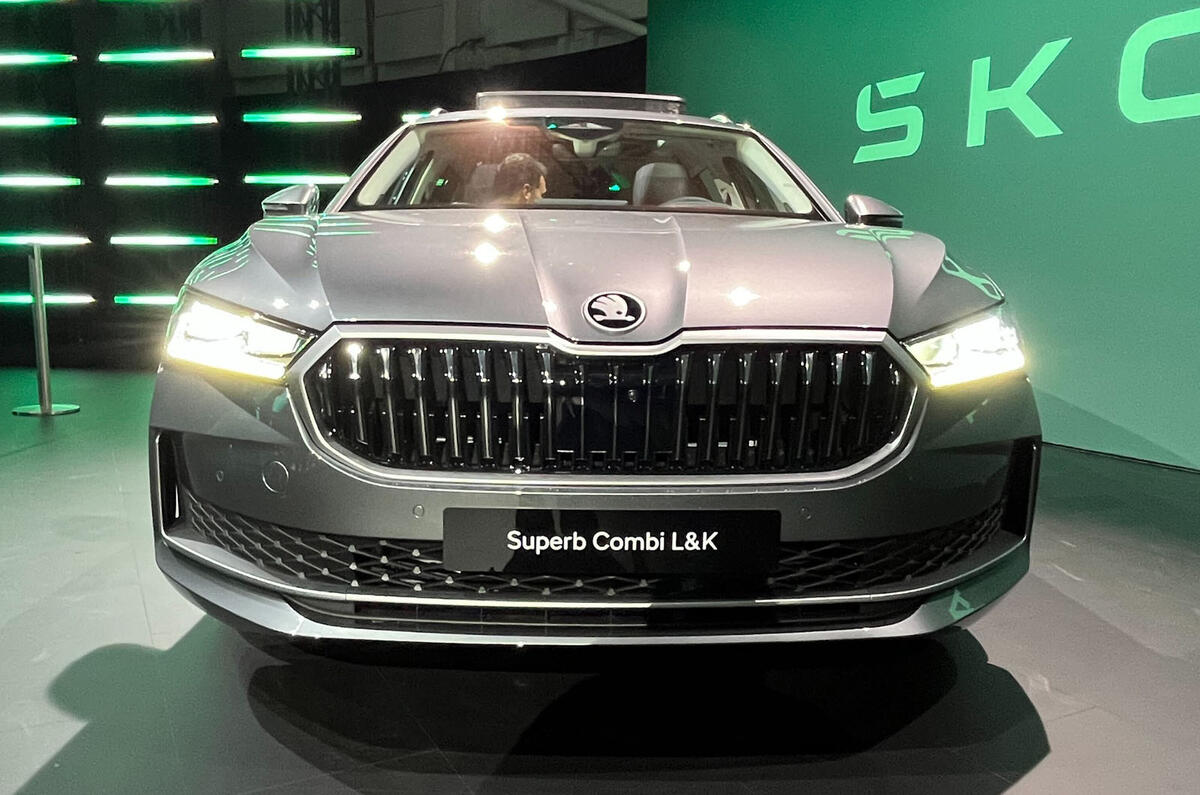

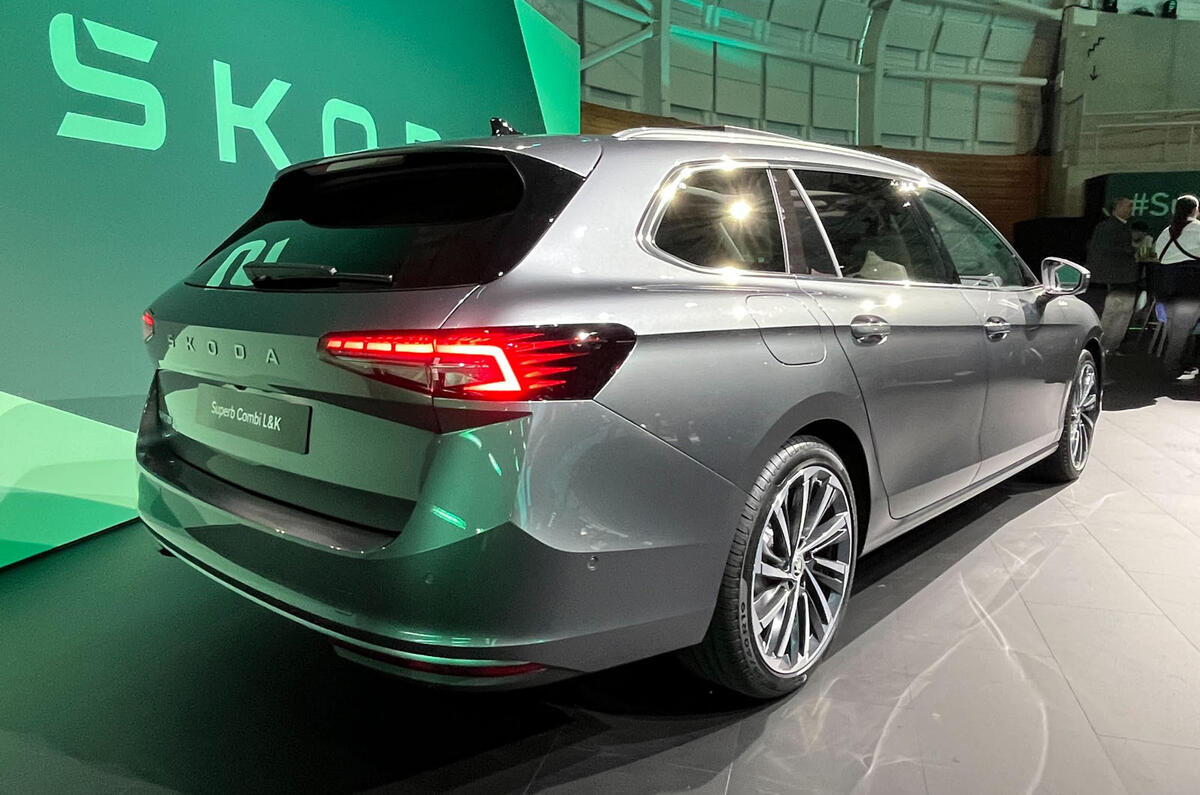
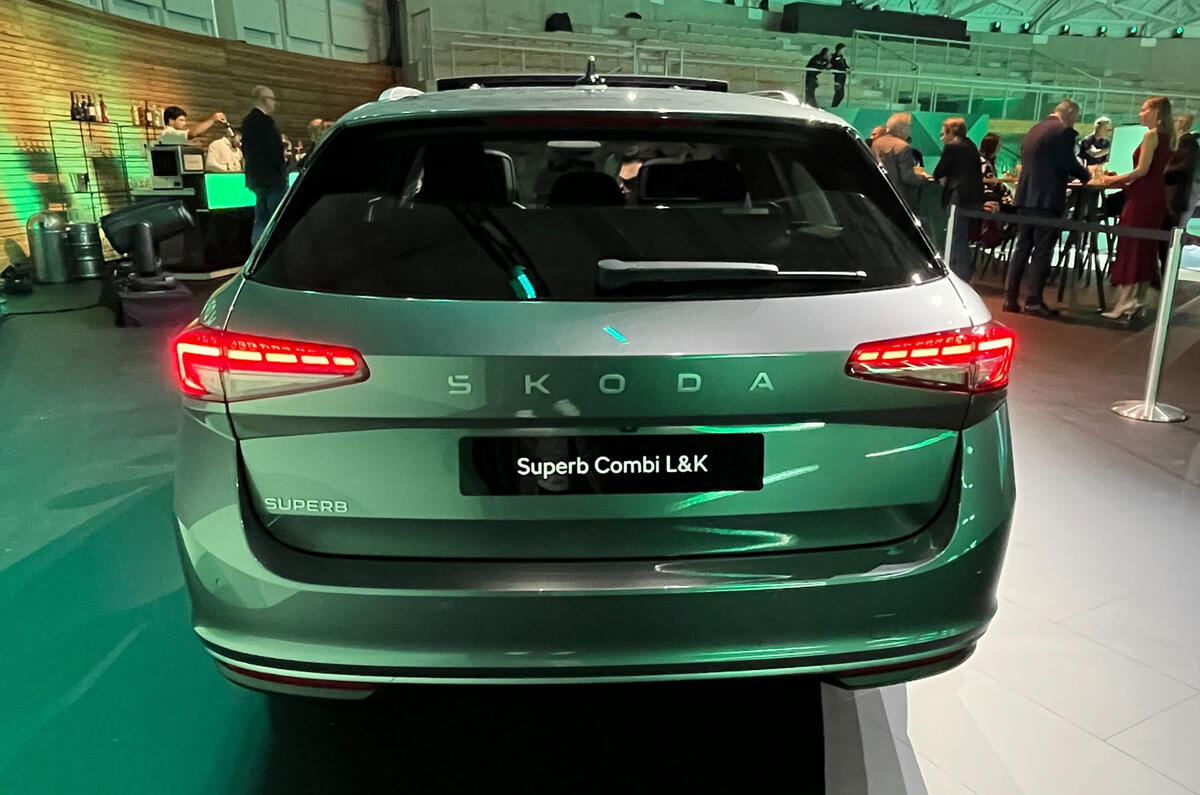
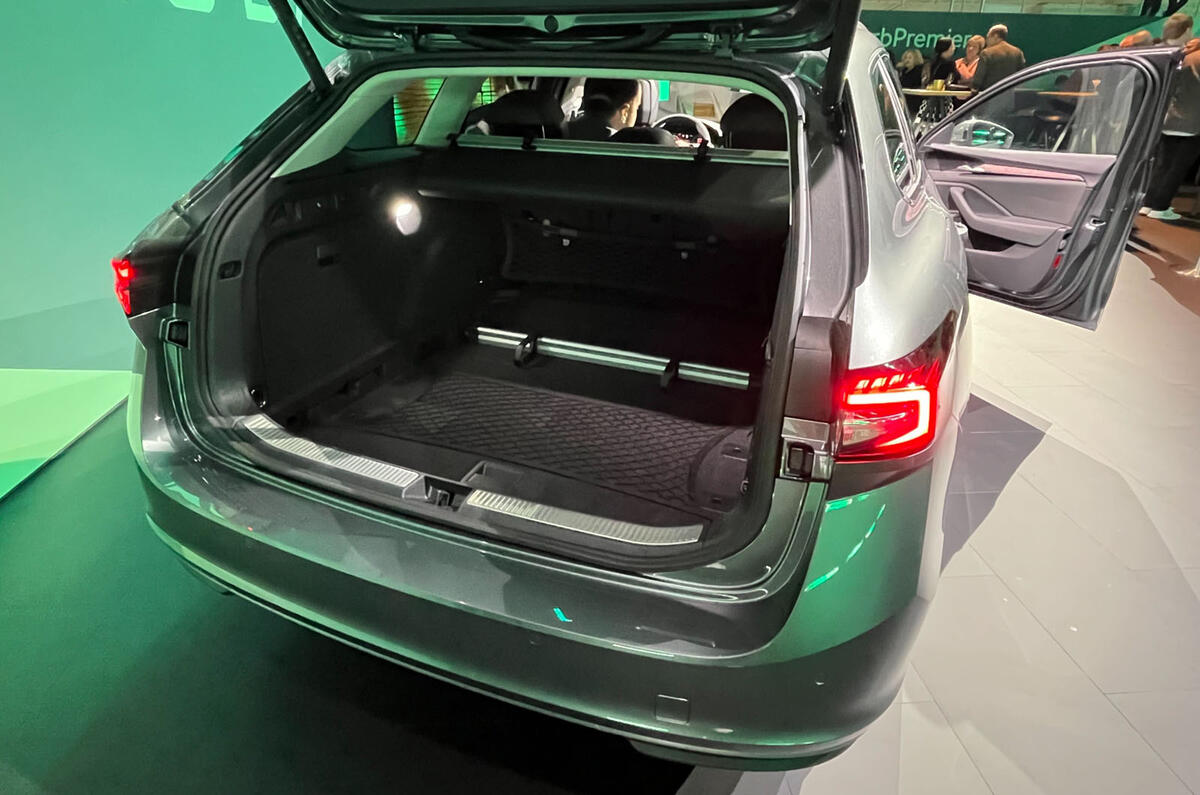
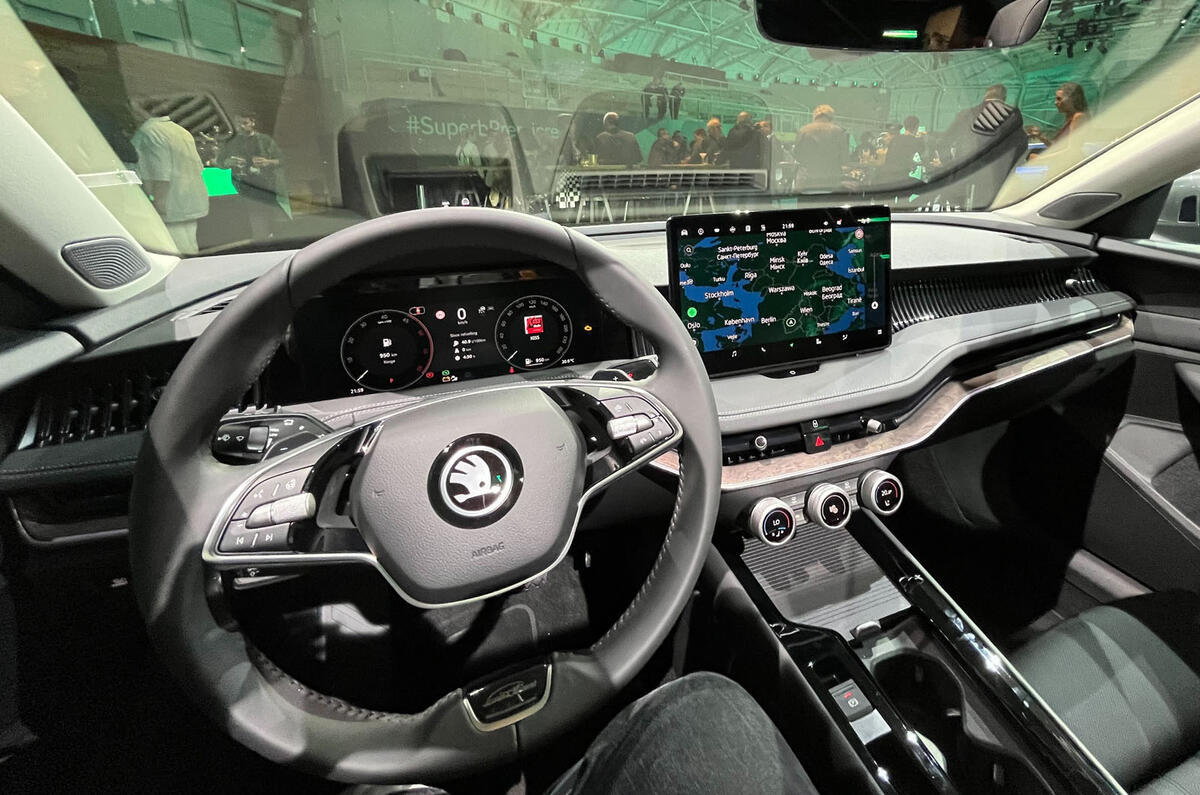
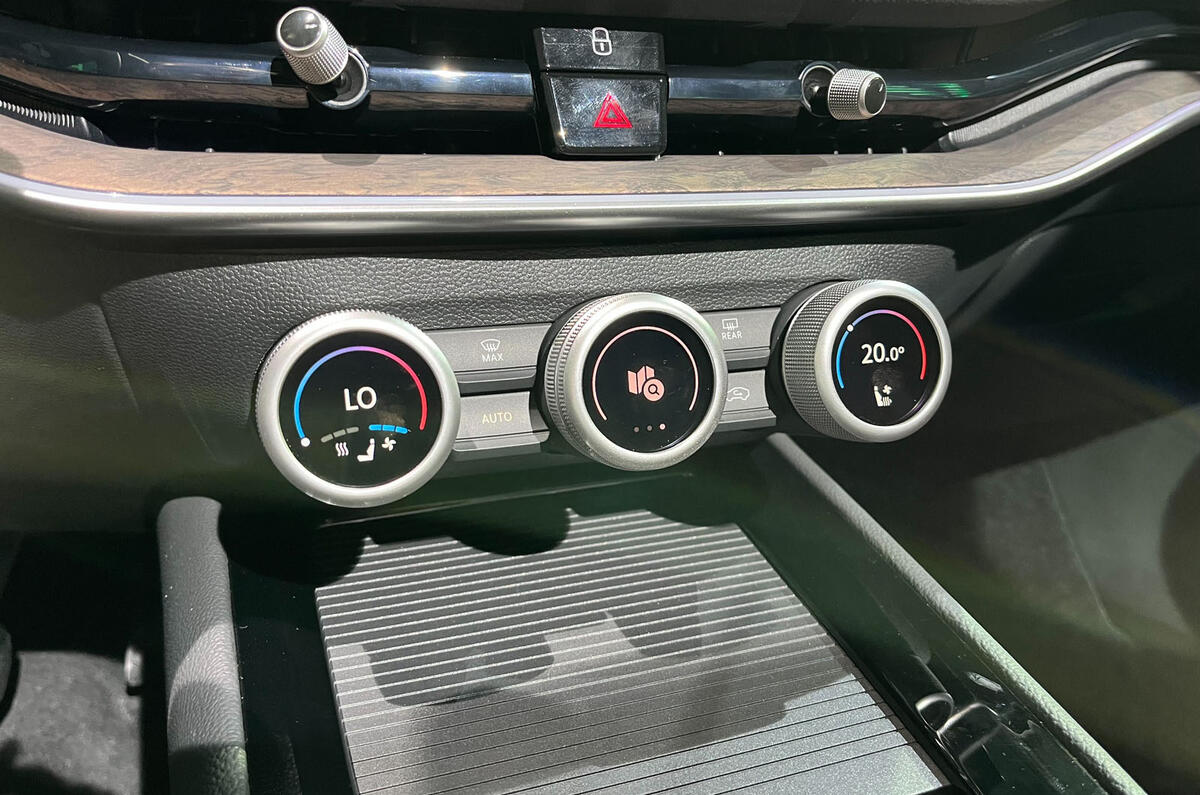
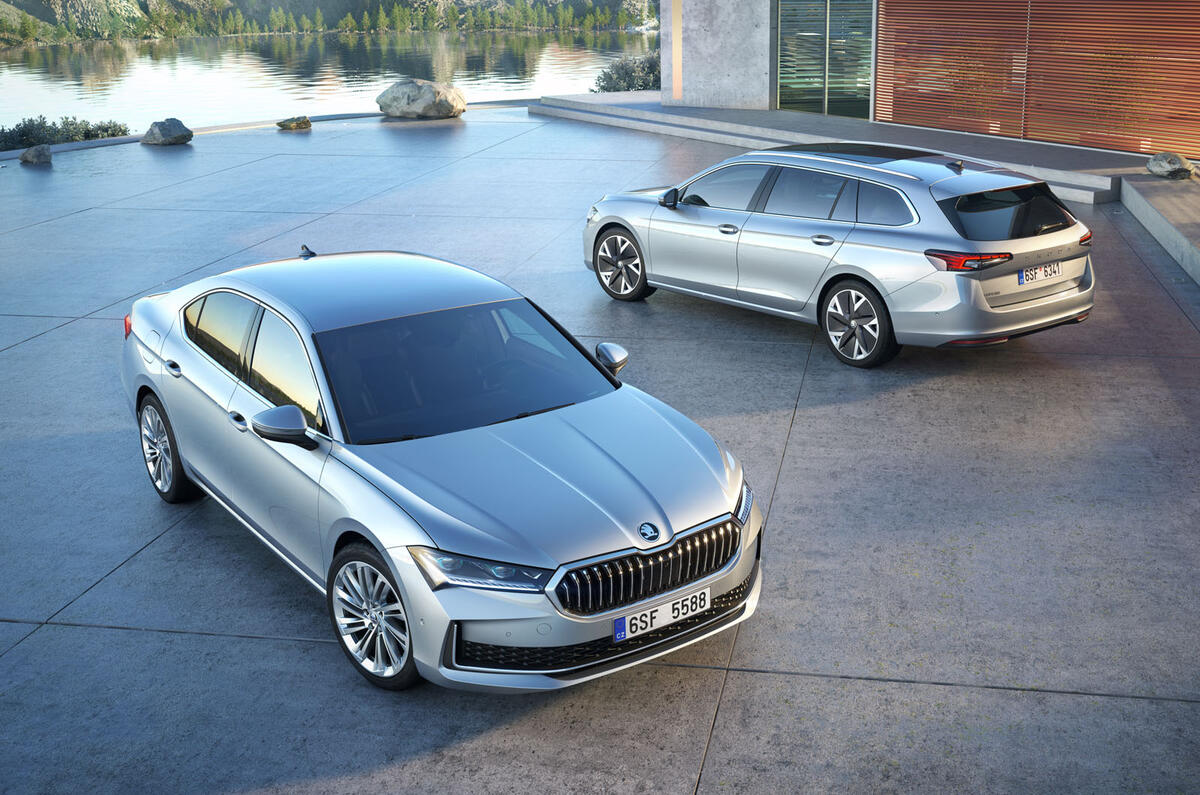
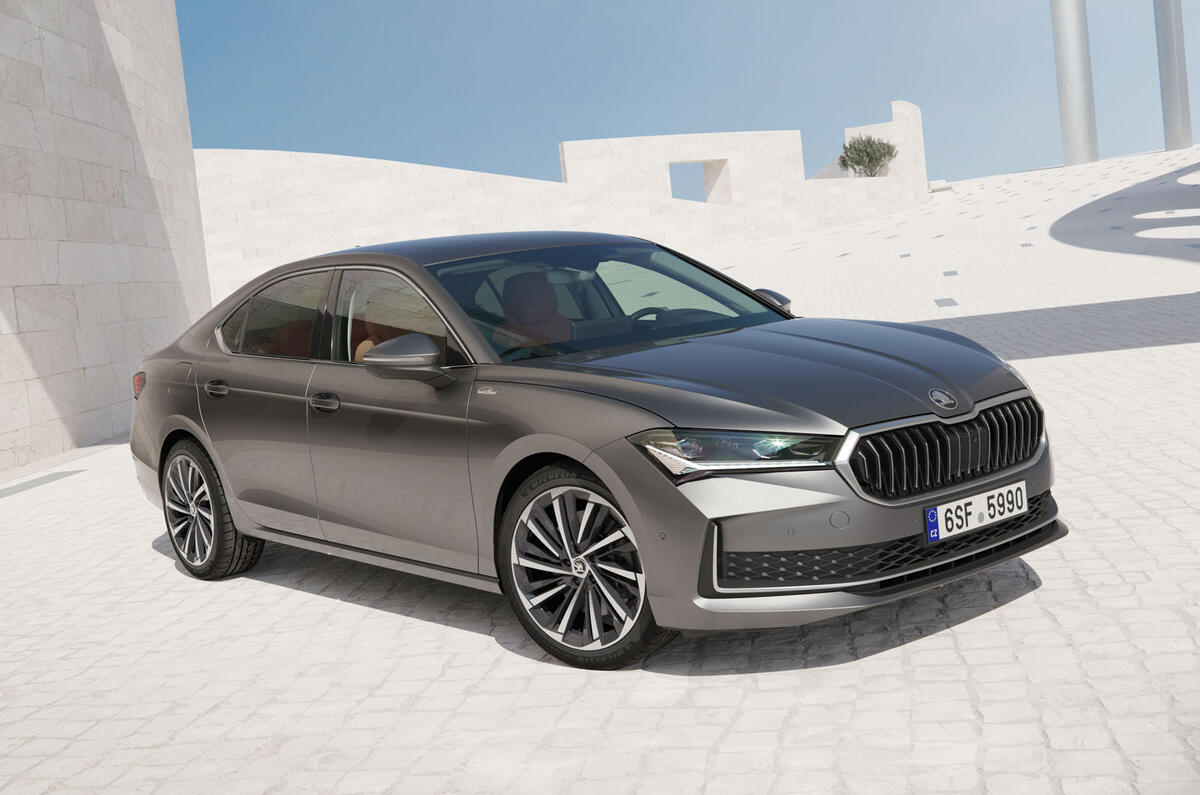
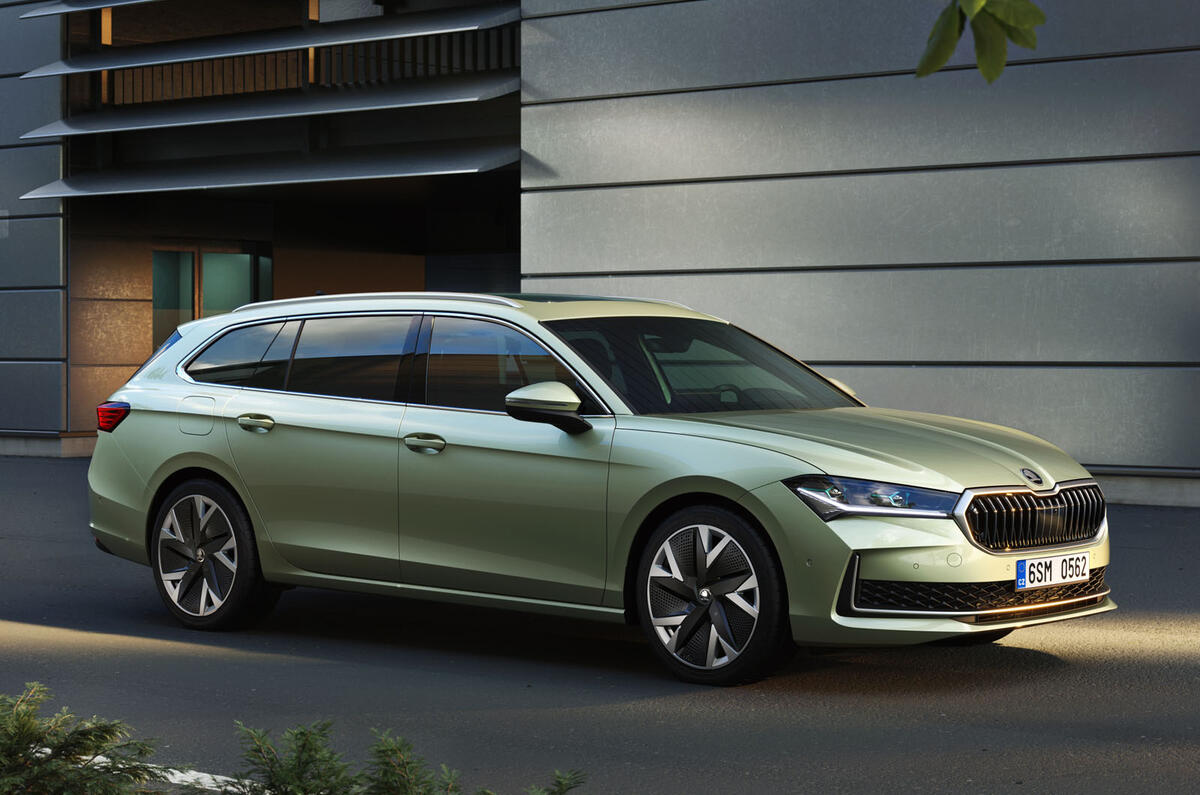
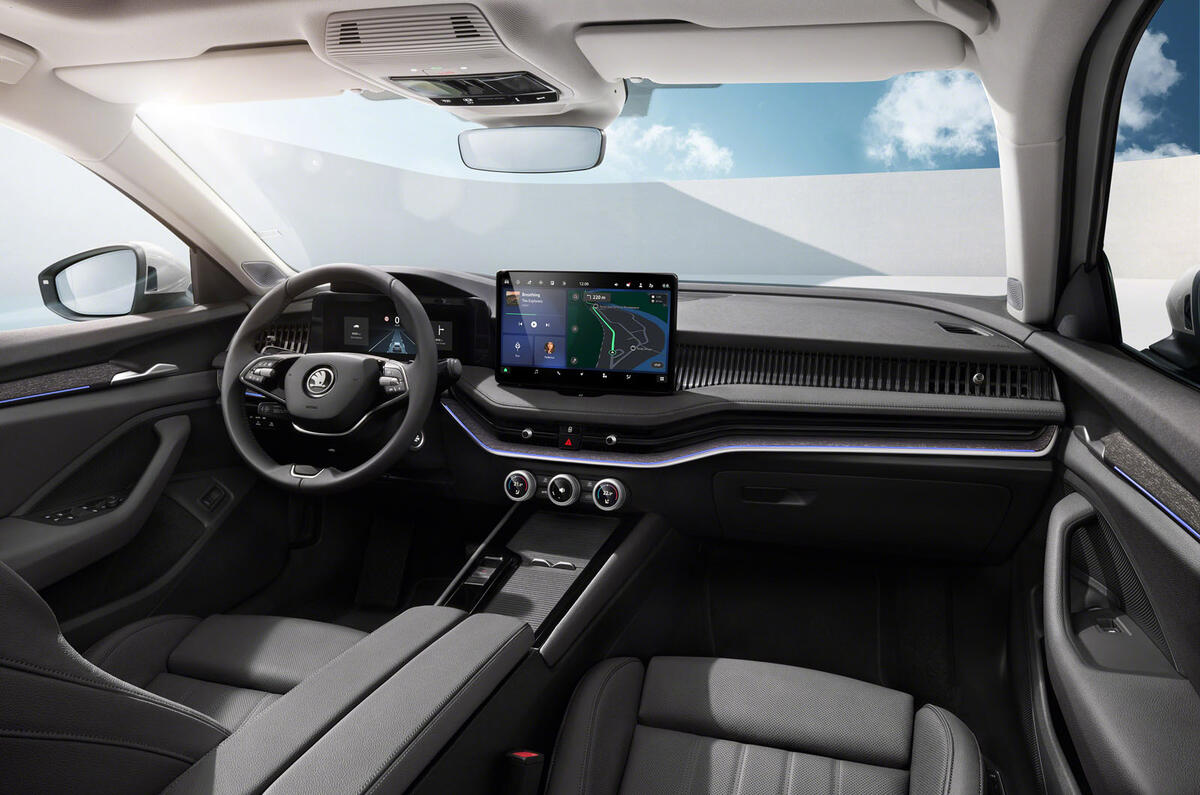
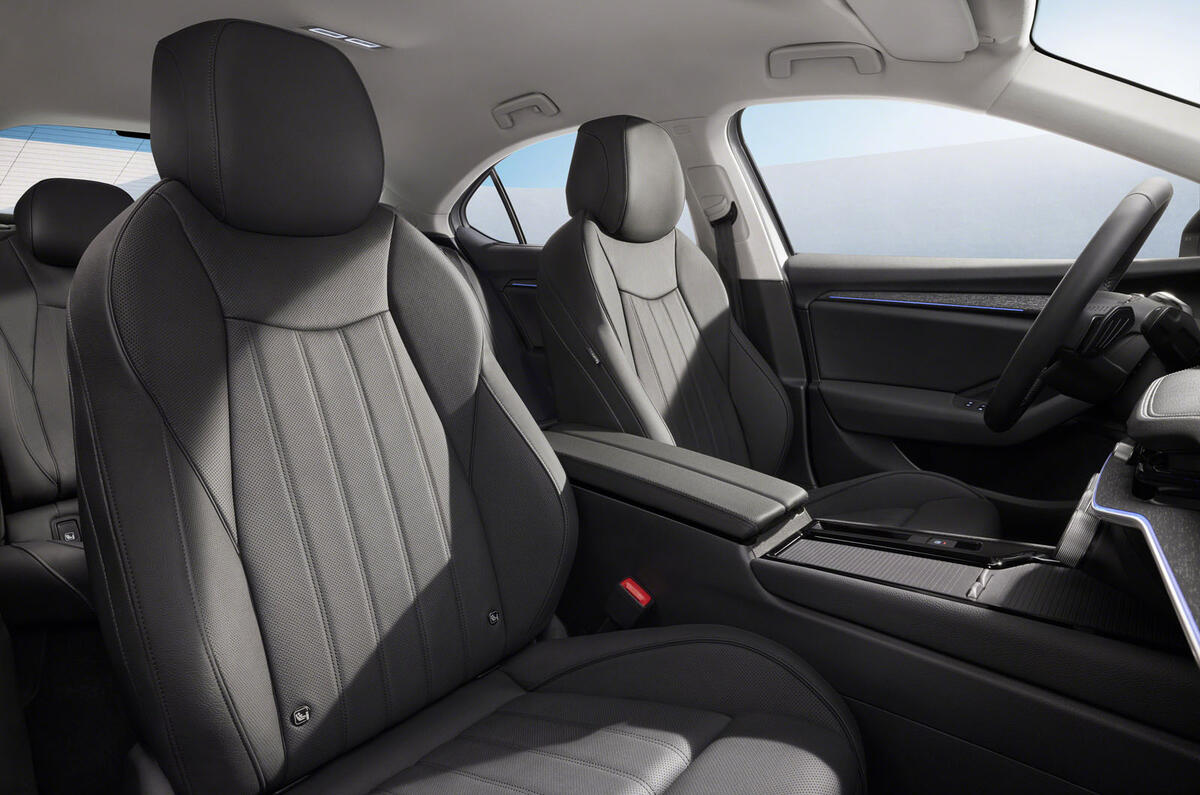

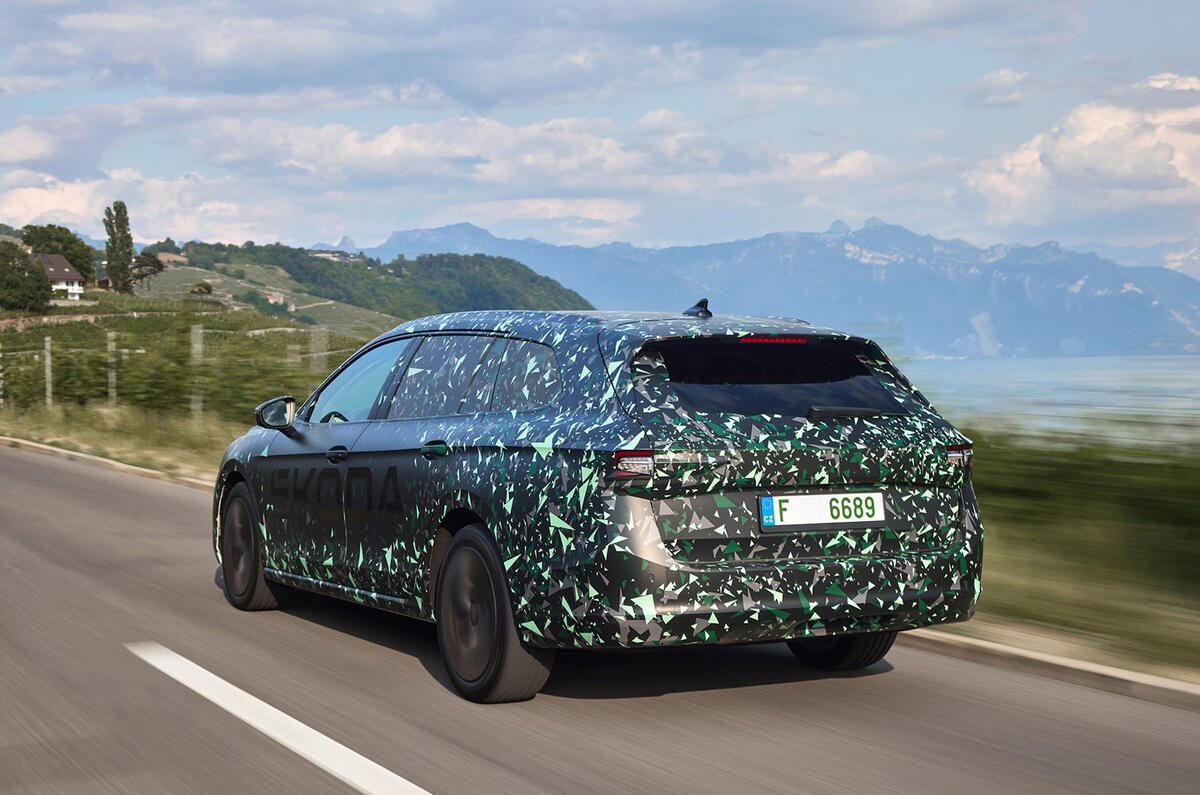
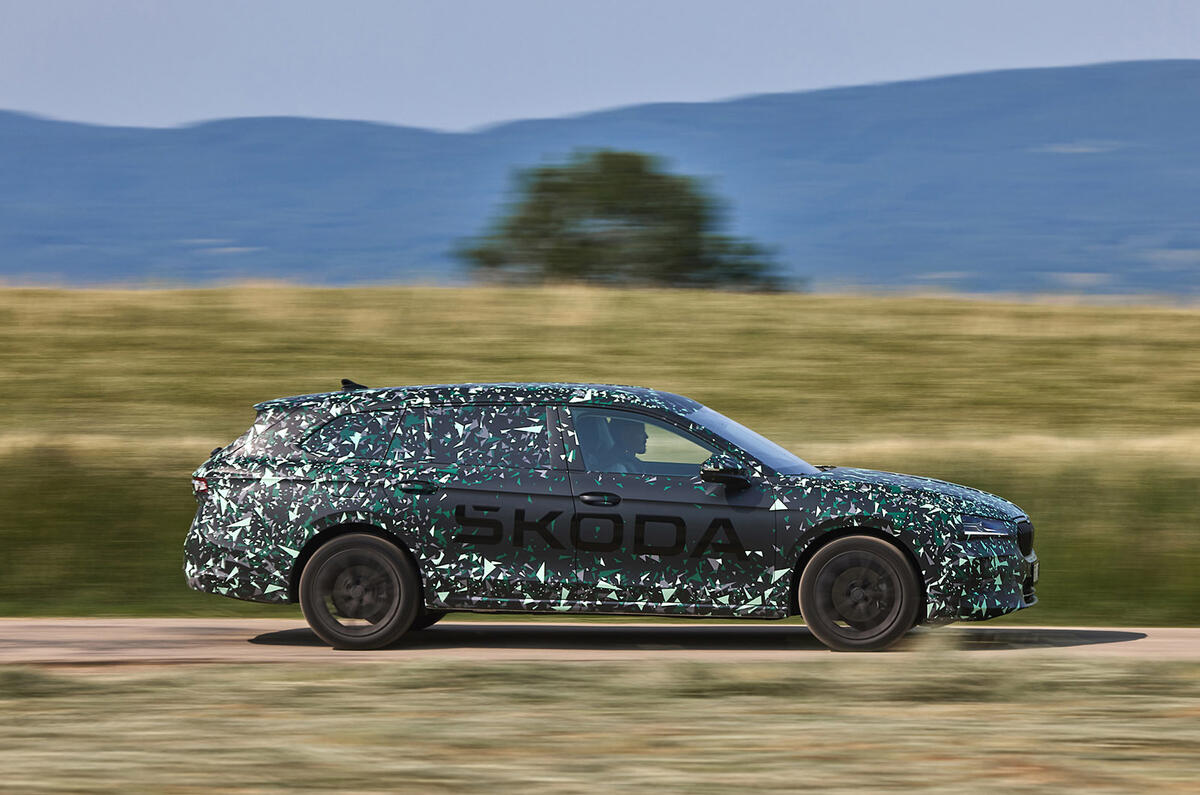

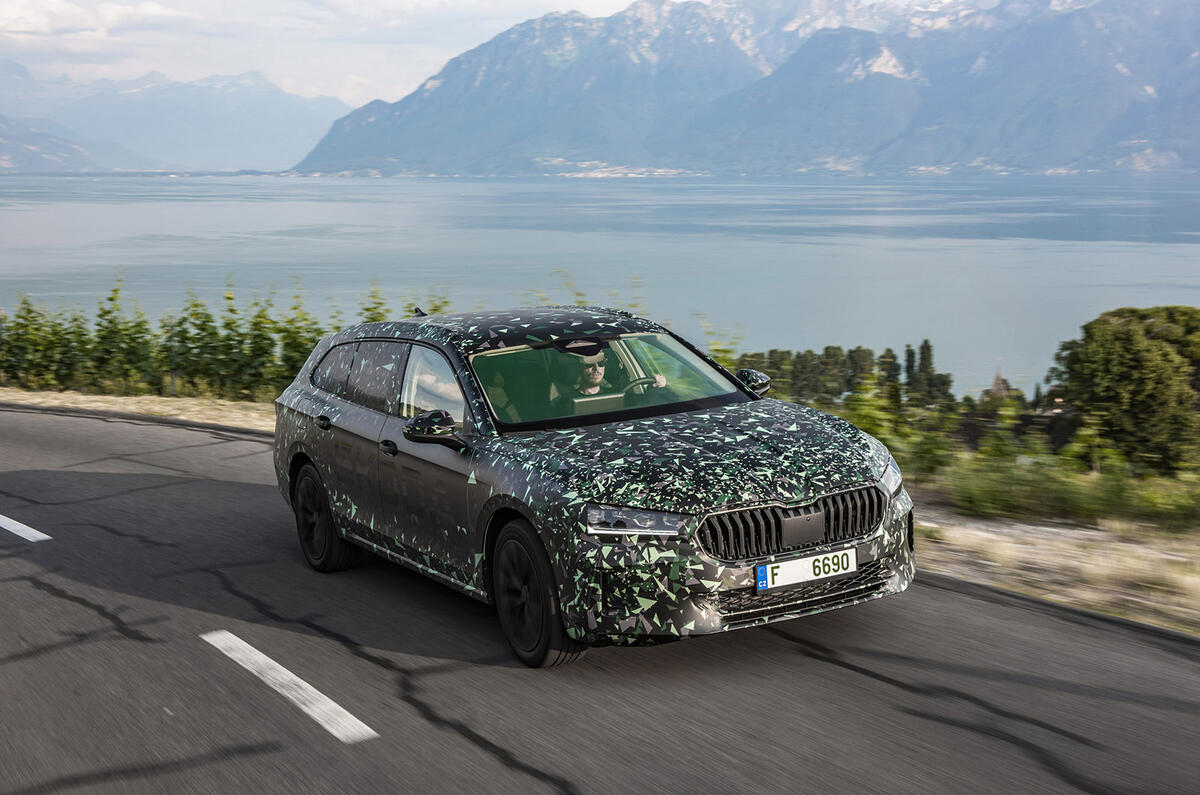
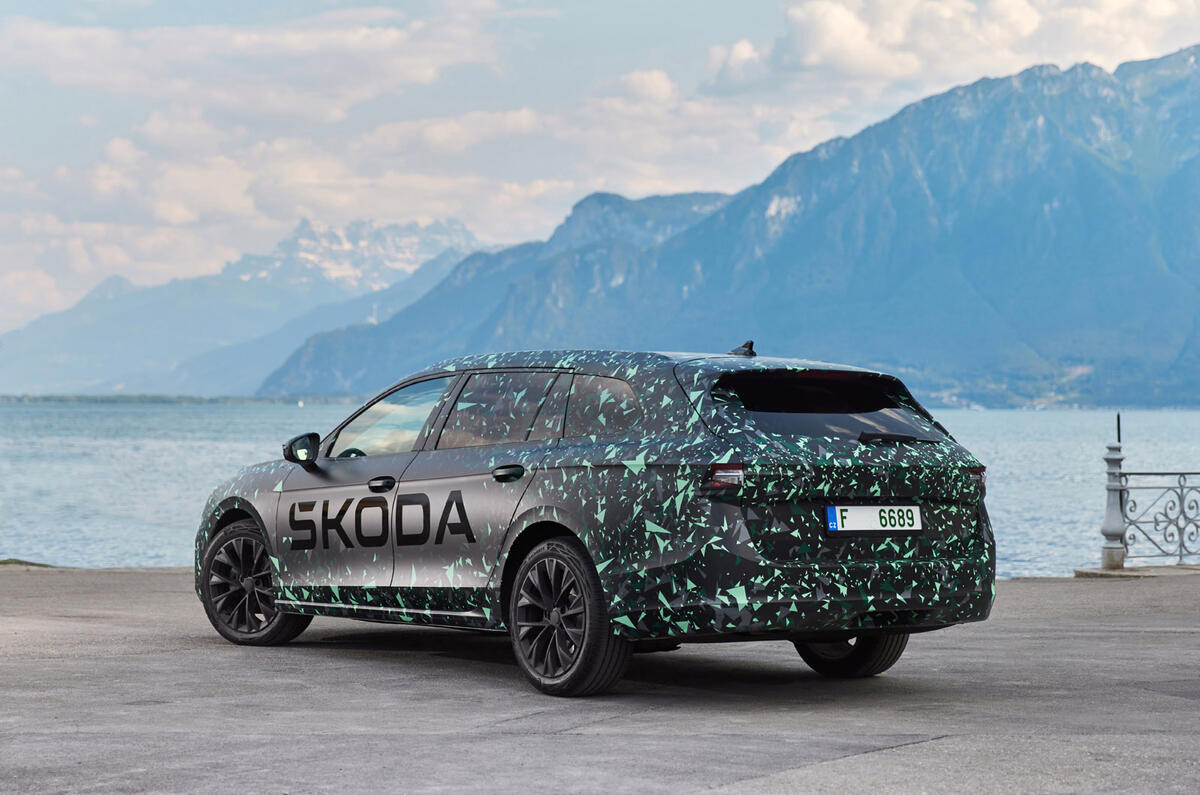




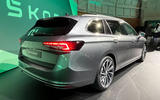
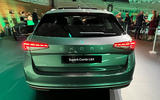
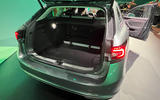

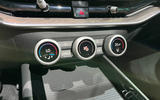
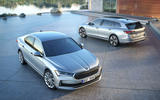
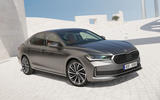
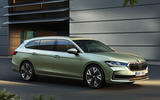
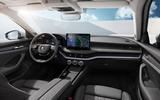


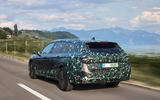


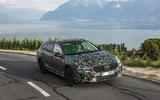

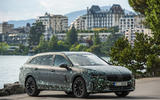





Join the debate
Add your comment
I think that Skoda design reached its peak with the current outgoing Superb. Finally here was a Skoda that was in proportion, rather than being an extended VW platform which made for awkward looking long and narrow cars. It looks classy, elegant and sufficiently detailed to be a Skoda without any fussiness.
The new one however just looks like a.n.other car. And as someone rightly points out below, the one thing it didn't need to be was bigger.
i think it's fair to say that we have now passed peak car. New cars are too complex and only seemingly designed for a life of up to 5 years before the over complex systems start failing and causing otherwise good cars to become economic write offs. Shame
A bit underwhelming. I think the current car looks better, particularly at the back and it's too similar overall to the Passat. That said, it's better looking that the Passat which begs the question, why would you buy one over the Superb?